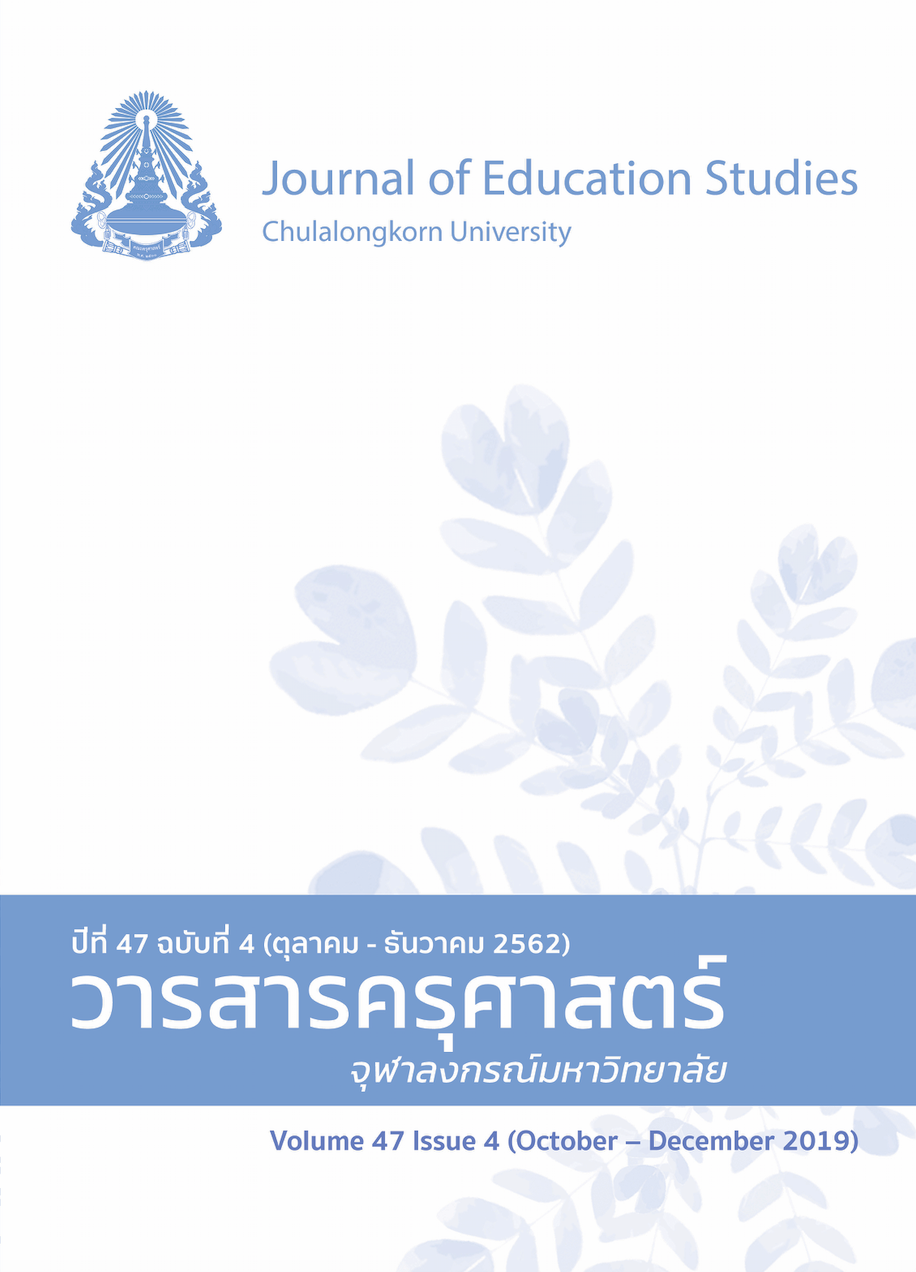A Study of Creating Personal Learning Environments by Students of the Faculty of Education Majoring in Computer Education
Keywords:
PERSONAL LEARNING ENVIRONMENT, LEARNING PROCESS, PLE CONCEPT, PLE PROCESS, WEB 2.0 TECHNOLOGYAbstract
This study aims at exploring the components and learning processes of personal learning environments shaped by students of the Faculty of Education majoring in computer education. The participants of the study were 37 students of the Faculty of Education at Chulalongkorn University who took computer programming courses selected using the purposive sampling technique. The research instruments were a questionnaire and an observation form about making use of personal learning environments. The data were collected during and after the semester, analyzed using standard statistics, namely percentage, average, and standard deviation, and examined as concept maps. The results showed that there were three components of personal learning environments that the majority of the participants chose: people, comprising instructors, learners and their classmates; content, consisting of books and materials that the instructor gave and shared on the network drive, sources that were accessed via search engines, social network sites, academic sites, and other books and documents; and communication, involving face-to-face communication in classrooms, the use of Google Drive, Line app groups, and knowledge-sharing blogs. It was also found that the learners showed an average score for each learning process according to the components as follows: 44.22 for people, 38.54 for content, and 17.97 for communication, respectively.
References
Attwell, G. (2007). Personal learning environments the future of e-learning?. Lifelong Learning, 2(1), 1-8.
Bates, A. T. (2015). Teaching in a digital age. Retrieved from https://opentextbc.ca/teachinginadigitalage/chapter/5-2-what-is-a-learning-environment/
Chatti, M. A. (2007). Personal-environments-loosely-joined. Retrieved from http://mohamedaminechatti.blogspot.com/2007/01/personal-environments-loosely-joined.html
Dabbagh, N., & Kitsantas, A. (2011). Personal learning environments, social media, and self-regulated learning: A natural formula for connecting formal and informal learning. Internet and Higher Education, 15(1), 3–8. doi:10.1016/j.iheduc.2011.06.002
Downes, S. (2005). E-learning 2.0. Retrieved from https://elearnmag.acm.org/featured.cfm?aid=1104968
Kompen, R. T., Edirisingha, P., & Mobbs, R. (2008). Building web 2.0-based personal learning environments – A conceptual framework. Paris: EDEN Research. Retrieved from https://lra.le.ac.uk/bitstream/2381/4398/1/EDEN ResWksp 2008 Torres Kompen et al Web 2.0 PLE paper.pdf
Harmelen, M. V. (2006). Personal learning environments. In Proceedings of the sixth IEEE international conference on advanced learning technologies (ICALT '06) (pp. 815-816). Washington DC: IEEE Computer Society.
Mott, J. (2010). Envisioning the post-LMS era: The open learning network. Future of Higher Education, 33(1), 1-9. Retrieved from https://er.educause.edu/articles/2010/3/envisioning-the-postlms-era-the-open-learning-network
Schaffert, S. (2006). Semantic social software: Semantically enabled social software or socially enabled semantic web?. Retrieved from http://citeseerx.ist.psu.edu/viewdoc/download?doi=10.1.1.107.8638&rep=rep1&type=pdf
Schaffert, S., & Hilzensauer, W. (2008). On the way towards personal learning environments: Seven crucial aspects. eLearning Papers, 2(9), 1-11.
Valtonen, T., Hacklin, S., Dillon, P., Vesisenaho, M., Kukkonen, J., Hietanen, A. (2012). Perspectives on personal learning environments held by vocational students. Computers and Education, 58(2), 732-739.




